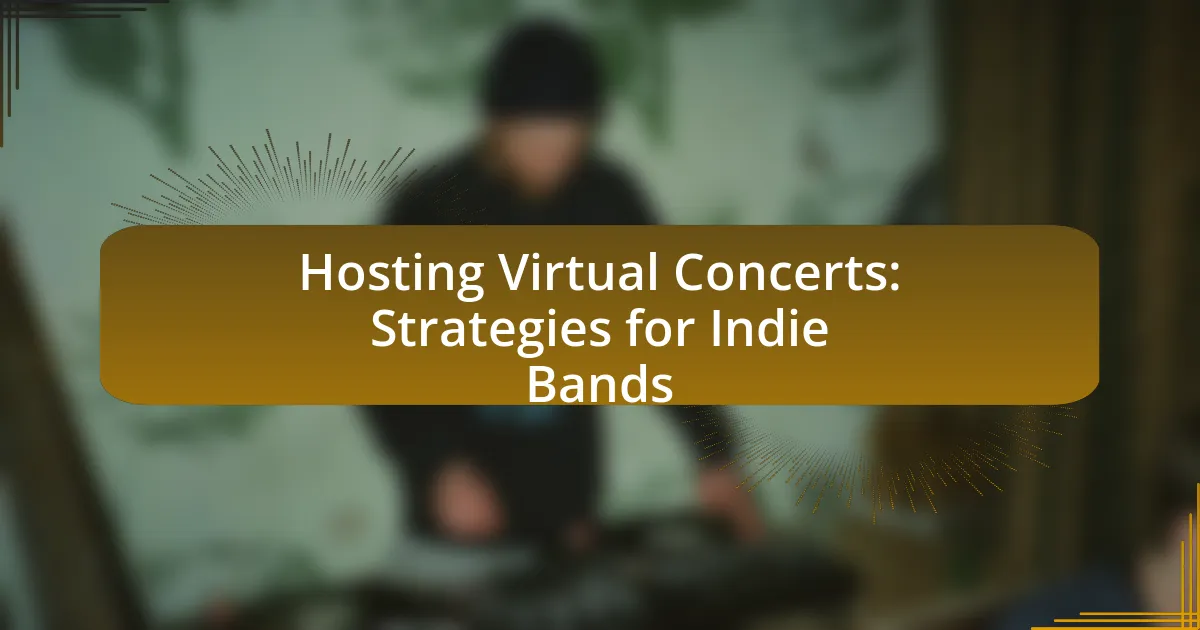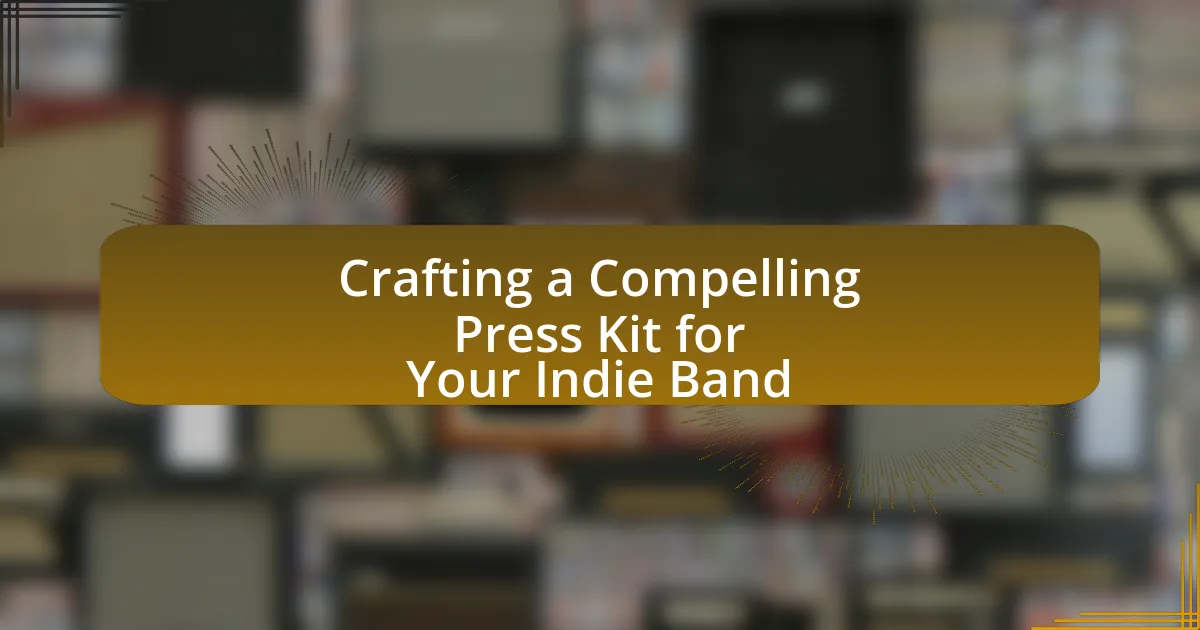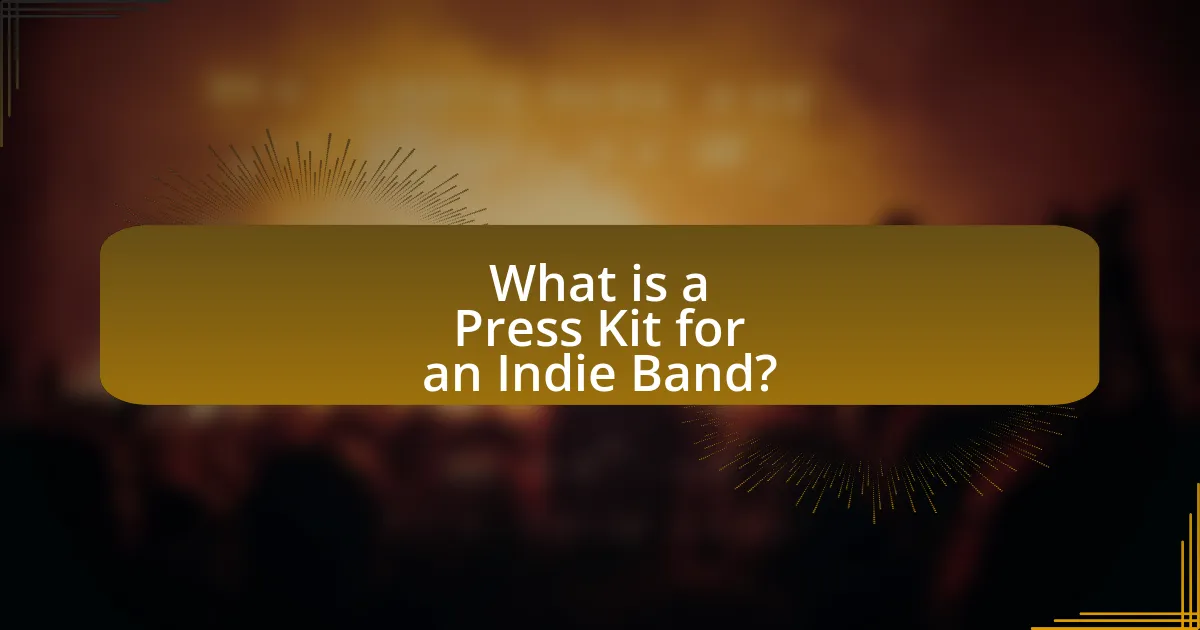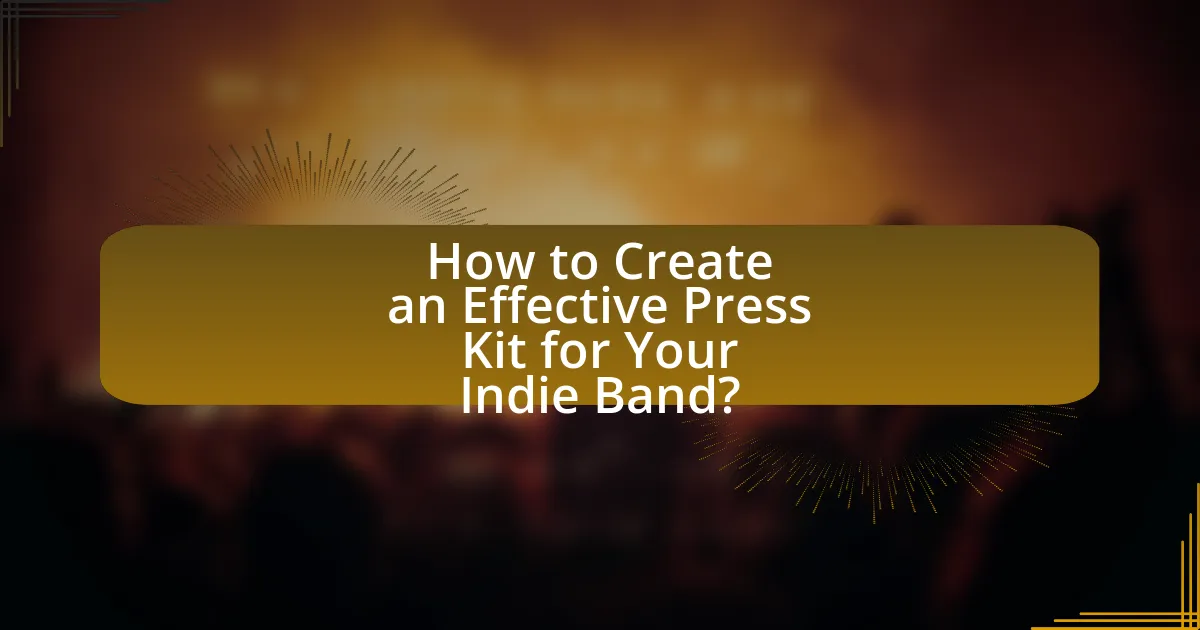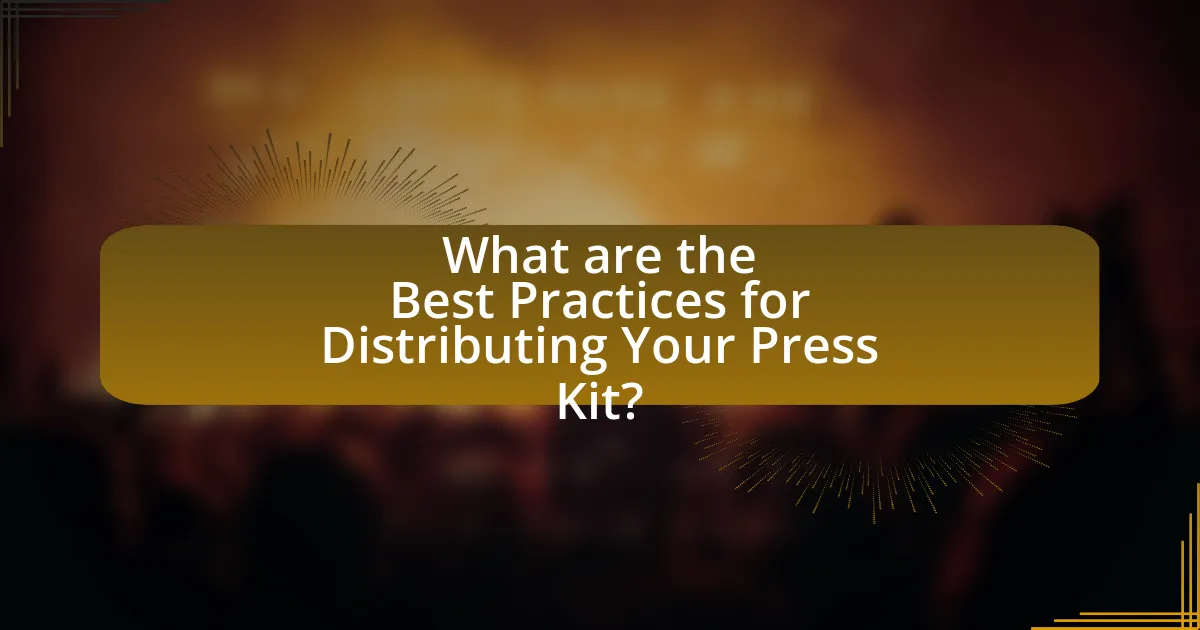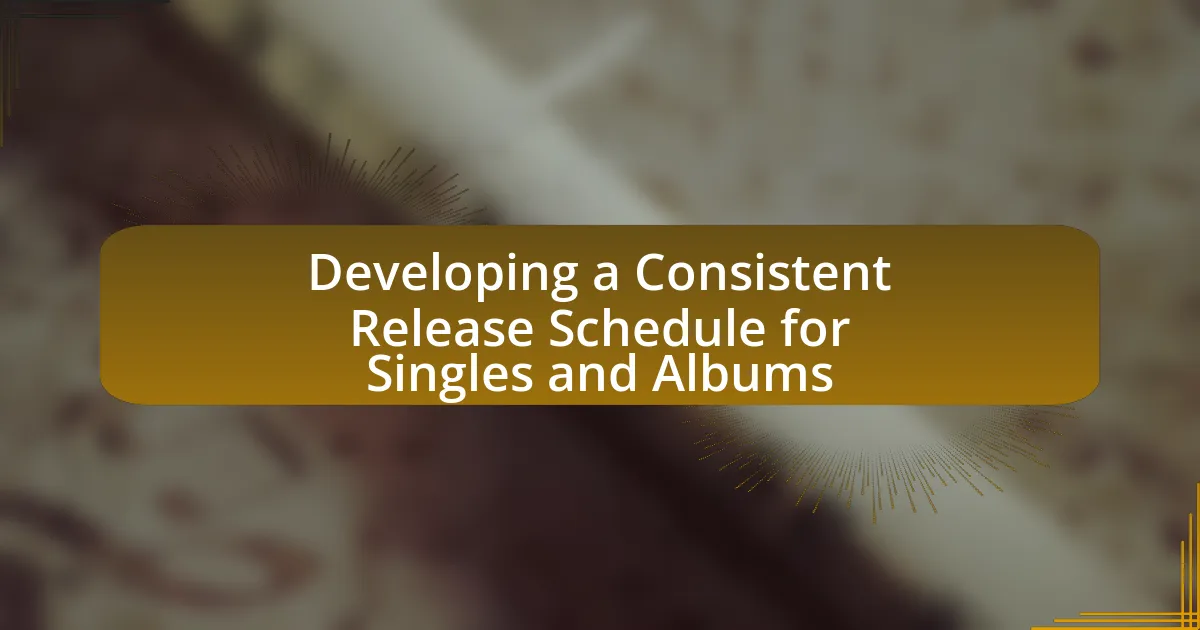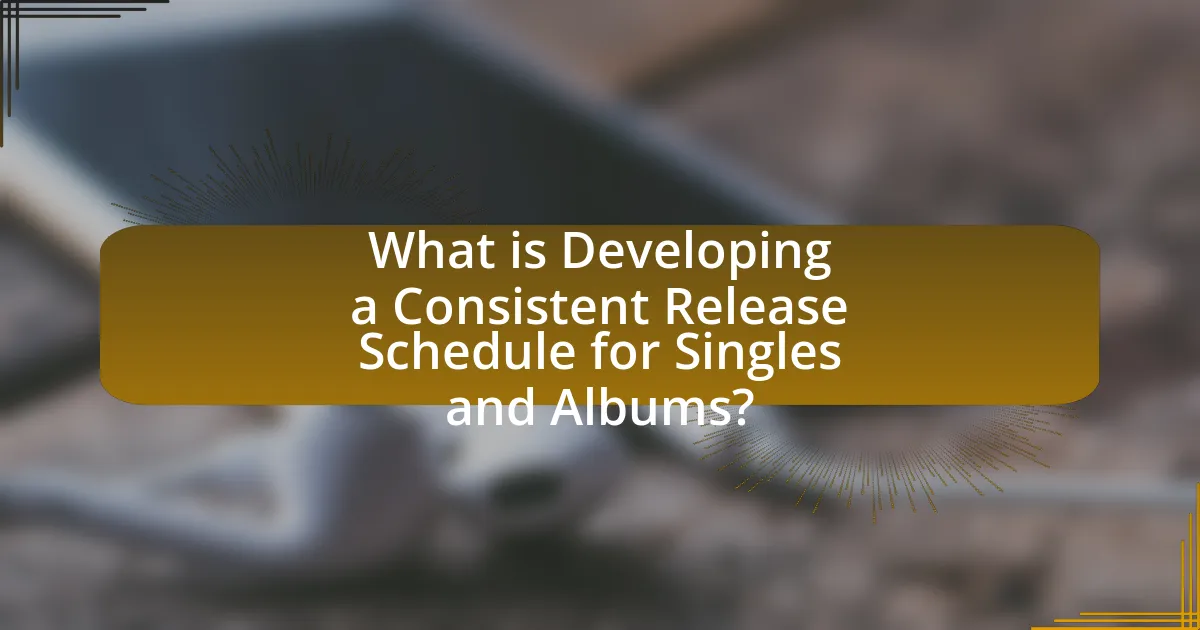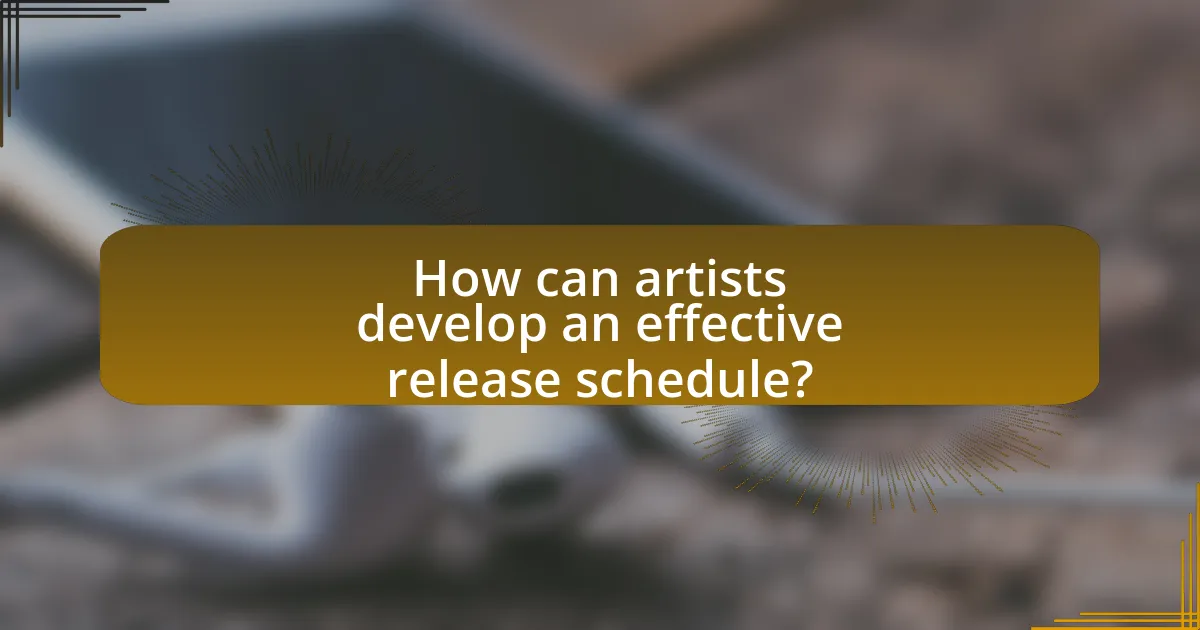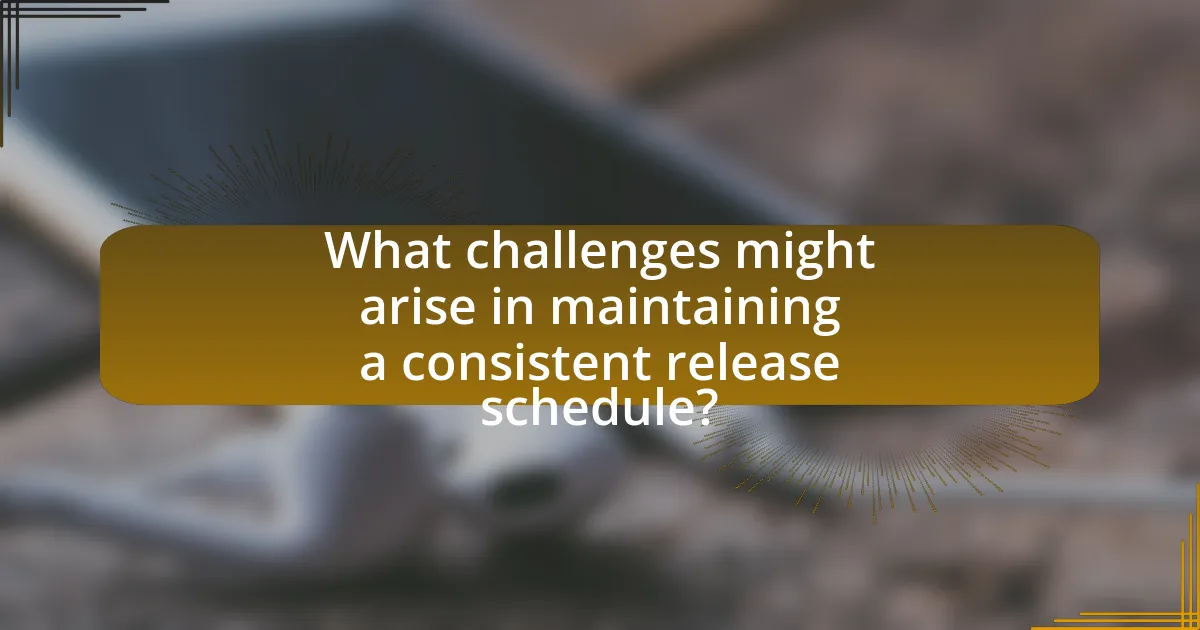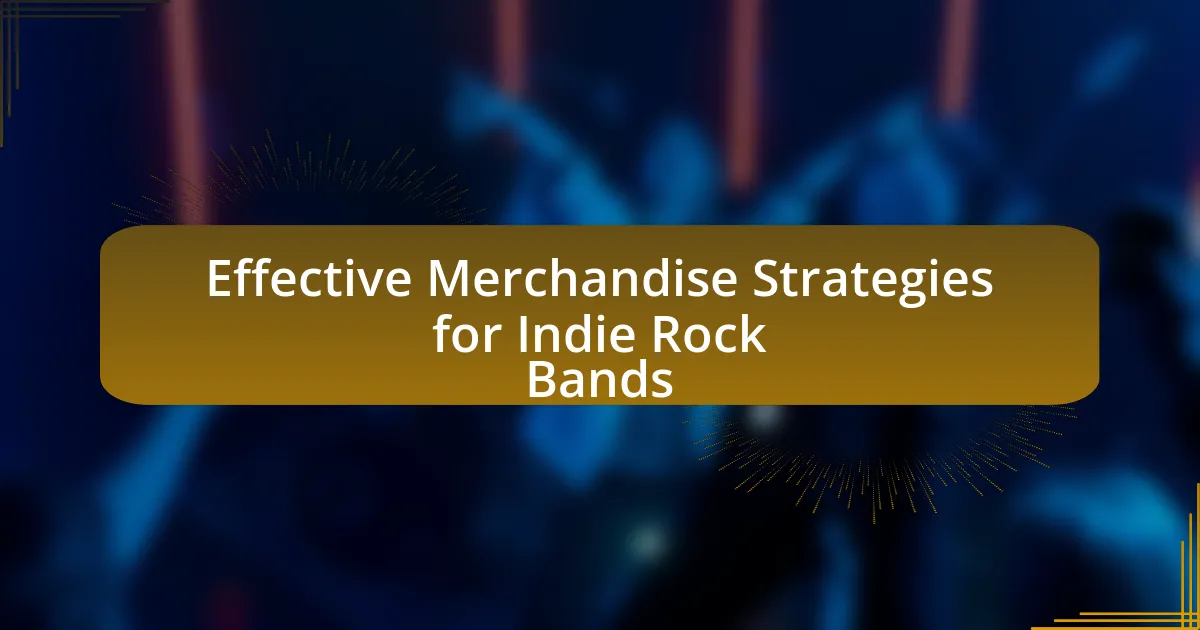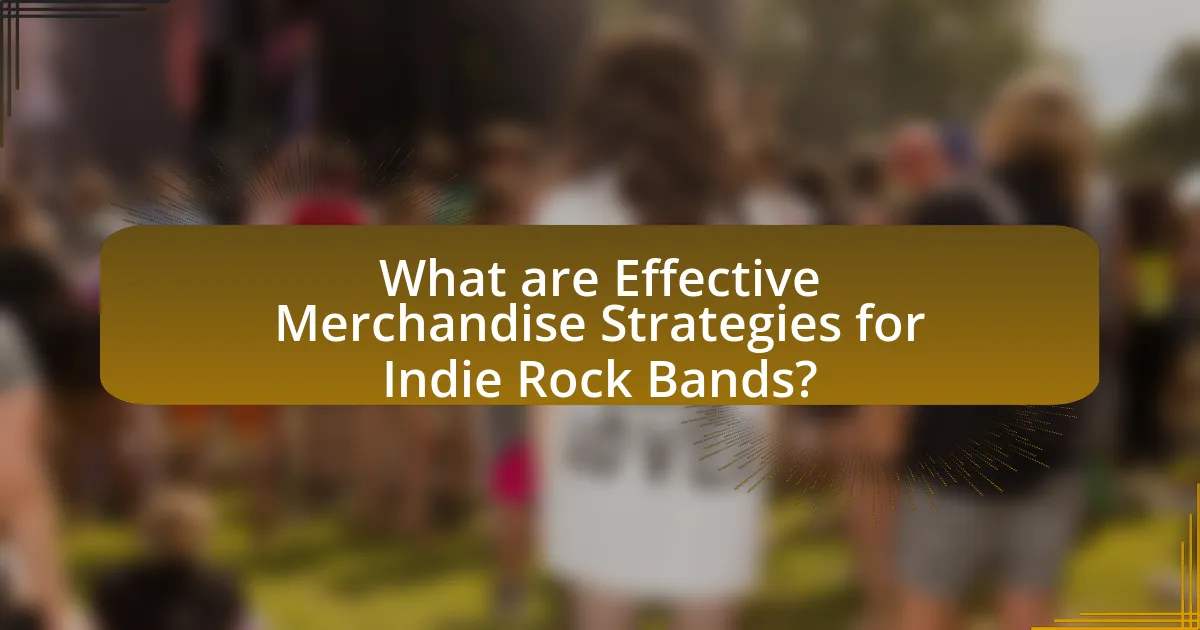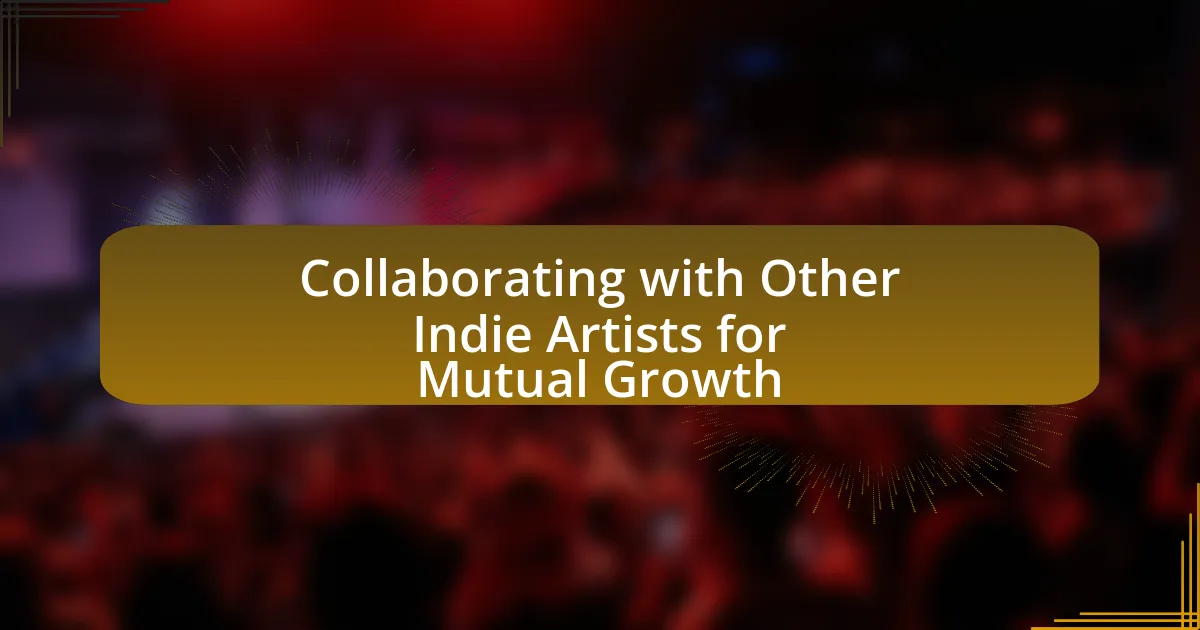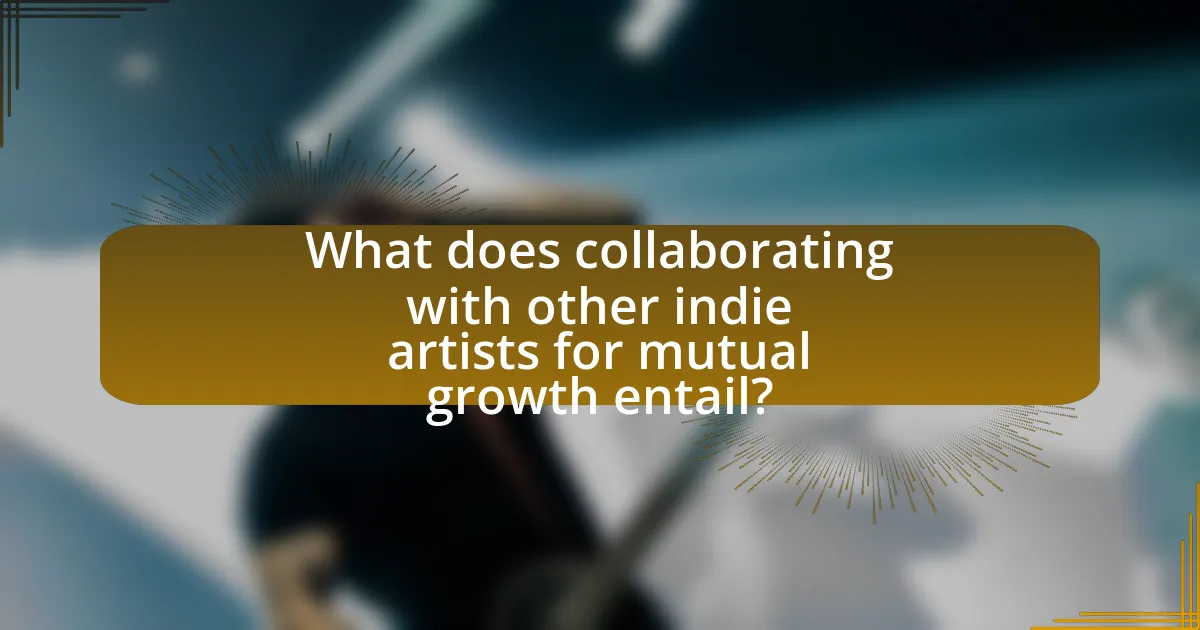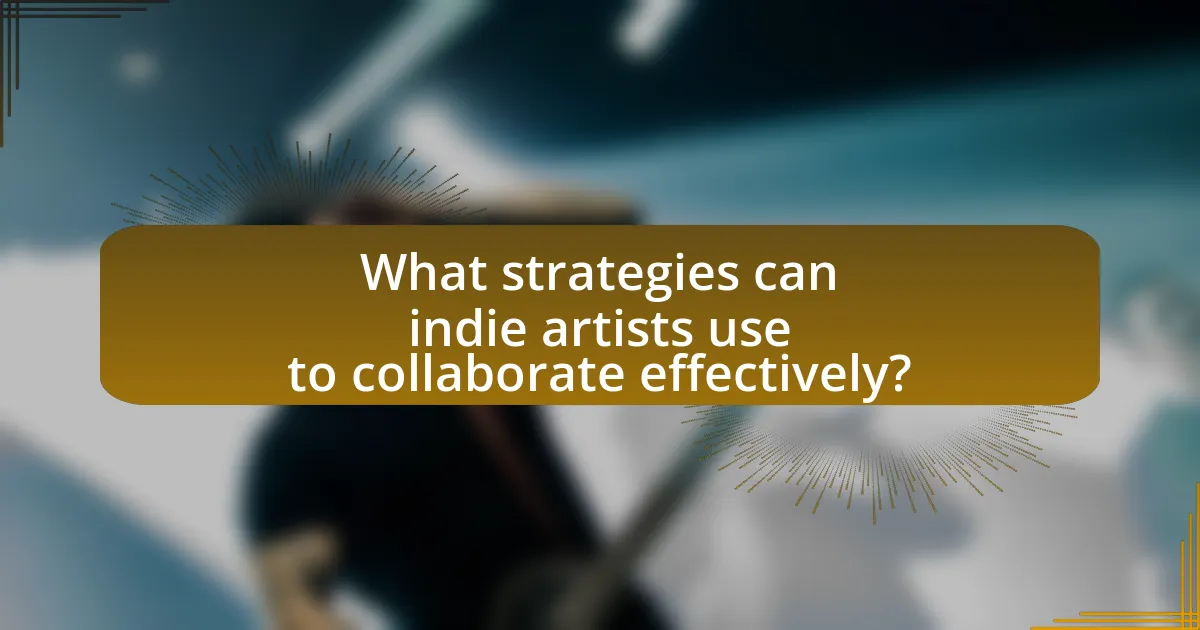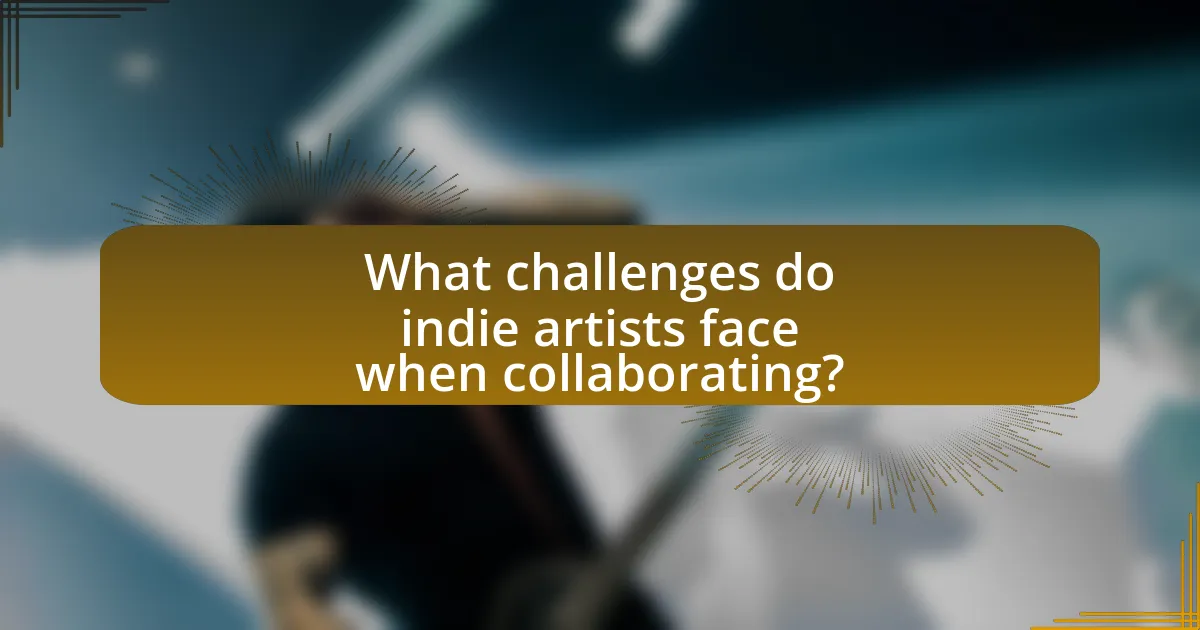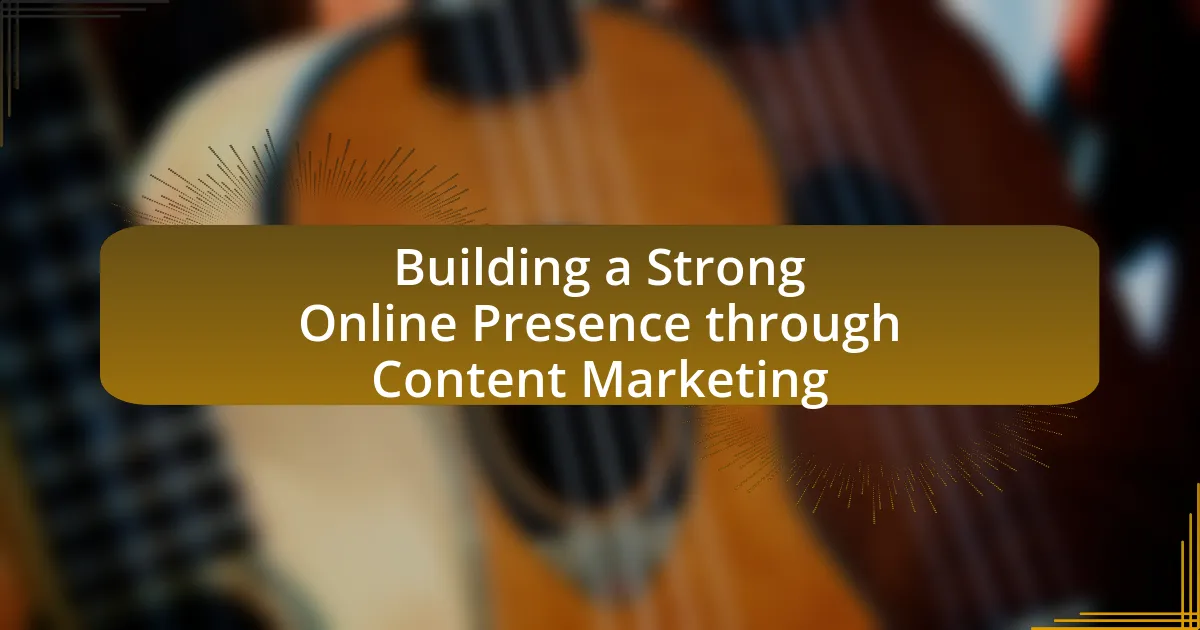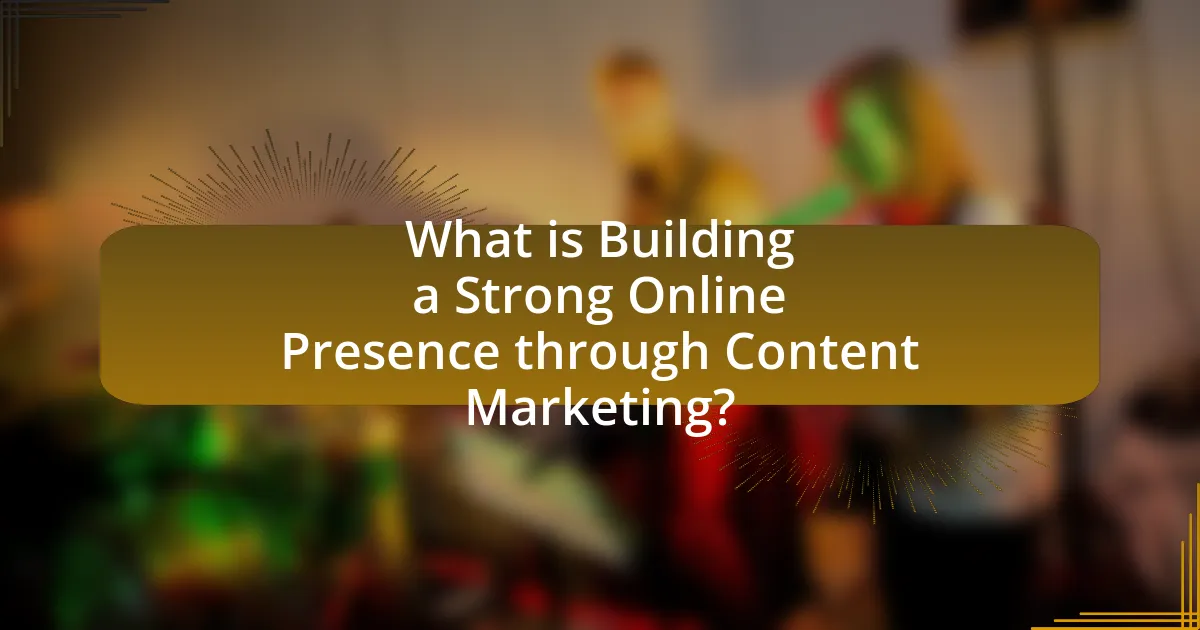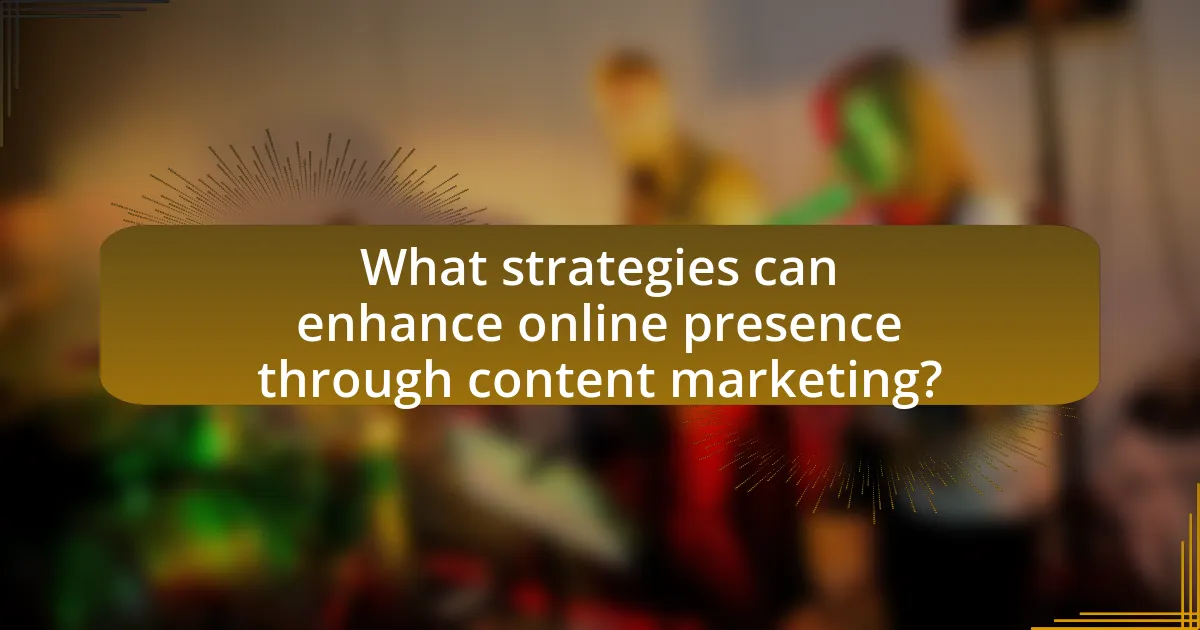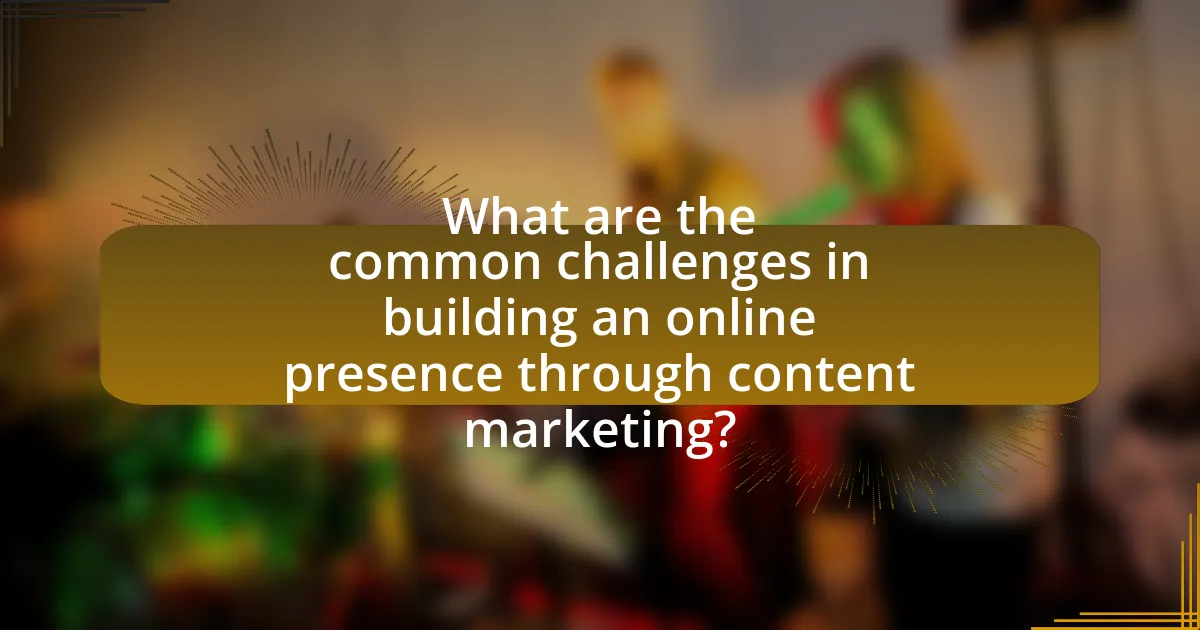Virtual concerts are live performances streamed online, enabling indie bands to reach global audiences without geographical constraints. This article explores the significance of virtual concerts for indie bands, particularly during the COVID-19 pandemic, highlighting their advantages over traditional performances, such as cost-effectiveness and increased accessibility. It discusses essential technology and platforms for hosting virtual concerts, strategies for effective promotion and audience engagement, and the challenges indie bands face in this format. Key takeaways include the importance of high-quality production, interactive elements, and measuring success through audience metrics.
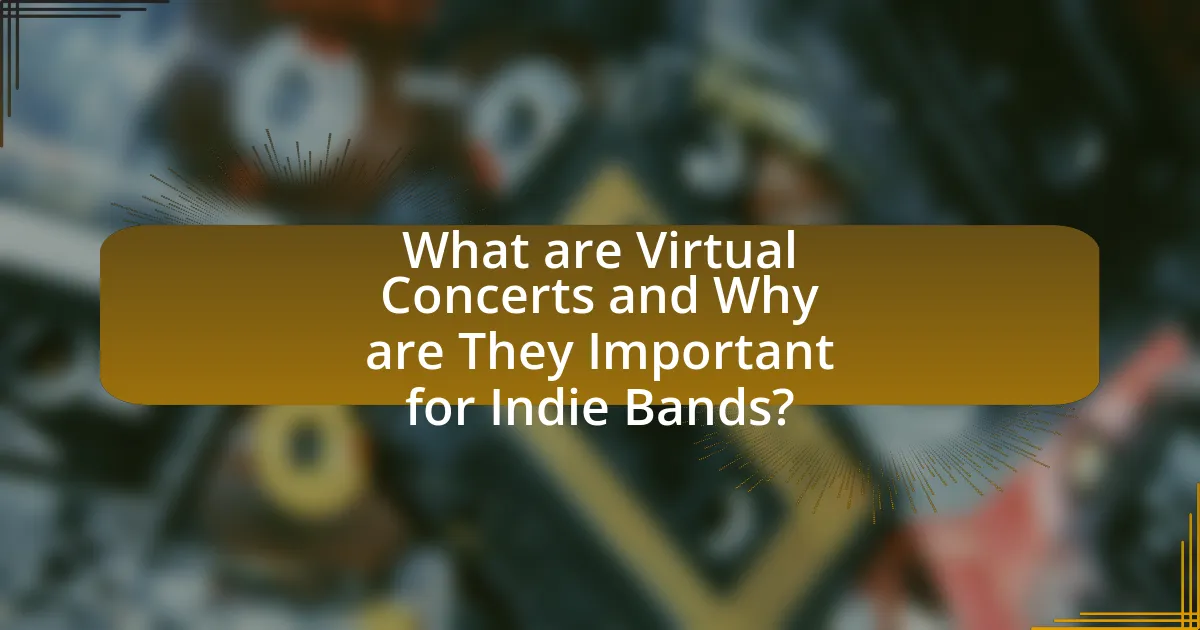
What are Virtual Concerts and Why are They Important for Indie Bands?
Virtual concerts are live performances streamed online, allowing artists to reach audiences without geographical limitations. They are important for indie bands because they provide a platform to showcase their music, engage with fans, and generate revenue, especially in situations where traditional live performances are not feasible. For instance, during the COVID-19 pandemic, many indie bands turned to virtual concerts to maintain their connection with fans and sustain their income, highlighting the necessity of this format in the modern music landscape.
How do virtual concerts differ from traditional live performances?
Virtual concerts differ from traditional live performances primarily in their format and accessibility. While traditional live performances occur in physical venues with an audience present, virtual concerts are streamed online, allowing viewers to participate from anywhere with an internet connection. This shift enables artists to reach a global audience without geographical limitations, as evidenced by the significant increase in online viewership during the COVID-19 pandemic, where platforms like YouTube and Twitch reported millions of concurrent viewers for virtual events. Additionally, virtual concerts often incorporate interactive elements, such as live chats and social media integration, enhancing audience engagement in ways that traditional performances cannot.
What technology is required to host a virtual concert?
To host a virtual concert, essential technology includes high-quality audio and video equipment, streaming software, and a reliable internet connection. High-quality audio equipment ensures clear sound, while video cameras capture the performance effectively. Streaming software, such as OBS Studio or Zoom, facilitates the live broadcast to audiences. A stable internet connection is crucial to prevent interruptions during the event. These components collectively enable a seamless virtual concert experience, as evidenced by numerous successful online events that have utilized similar setups to engage audiences effectively.
What platforms are best suited for virtual concerts?
The best platforms for virtual concerts include YouTube, Twitch, Facebook Live, and Zoom. YouTube offers a vast audience reach and monetization options, making it ideal for artists looking to gain visibility. Twitch specializes in live streaming and has a strong community engagement feature, which is beneficial for indie bands to connect with fans. Facebook Live allows for easy sharing and interaction within existing social networks, enhancing audience participation. Zoom provides a more intimate setting for virtual concerts, allowing for direct interaction between artists and fans. These platforms have been widely adopted by artists during the rise of virtual events, demonstrating their effectiveness in reaching audiences and facilitating engagement.
What advantages do virtual concerts offer to indie bands?
Virtual concerts offer indie bands increased accessibility to a global audience, allowing them to reach fans beyond geographical limitations. This format eliminates the need for physical venues, reducing costs associated with travel and logistics, which is particularly beneficial for indie bands with limited budgets. Additionally, virtual concerts can be recorded and shared, providing lasting content that can attract new listeners over time. According to a report by Eventbrite, 60% of attendees at virtual events are likely to purchase tickets for future live shows, indicating that virtual performances can effectively build a dedicated fan base.
How can virtual concerts expand an indie band’s audience?
Virtual concerts can expand an indie band’s audience by providing access to a global fanbase without geographical limitations. This format allows bands to reach viewers who may not have the opportunity to attend live shows due to distance, cost, or scheduling conflicts. For instance, during the COVID-19 pandemic, many indie bands reported increased viewership and engagement through platforms like YouTube and Instagram Live, with some artists reaching audiences in multiple countries simultaneously. This broadens their exposure and can lead to increased streaming numbers, merchandise sales, and fan interactions, ultimately fostering a larger and more diverse audience.
What cost benefits do virtual concerts provide compared to physical events?
Virtual concerts provide significant cost benefits compared to physical events, primarily by eliminating expenses related to venue rental, travel, and physical logistics. For instance, hosting a physical concert often incurs costs such as venue fees, security, insurance, and equipment rental, which can total thousands of dollars. In contrast, virtual concerts typically require only a reliable internet connection and basic streaming equipment, drastically reducing overhead costs. Additionally, artists can reach a global audience without the need for travel, further minimizing expenses. A study by Eventbrite found that virtual events can save organizers up to 80% on costs compared to traditional in-person events, highlighting the financial advantages of this format.
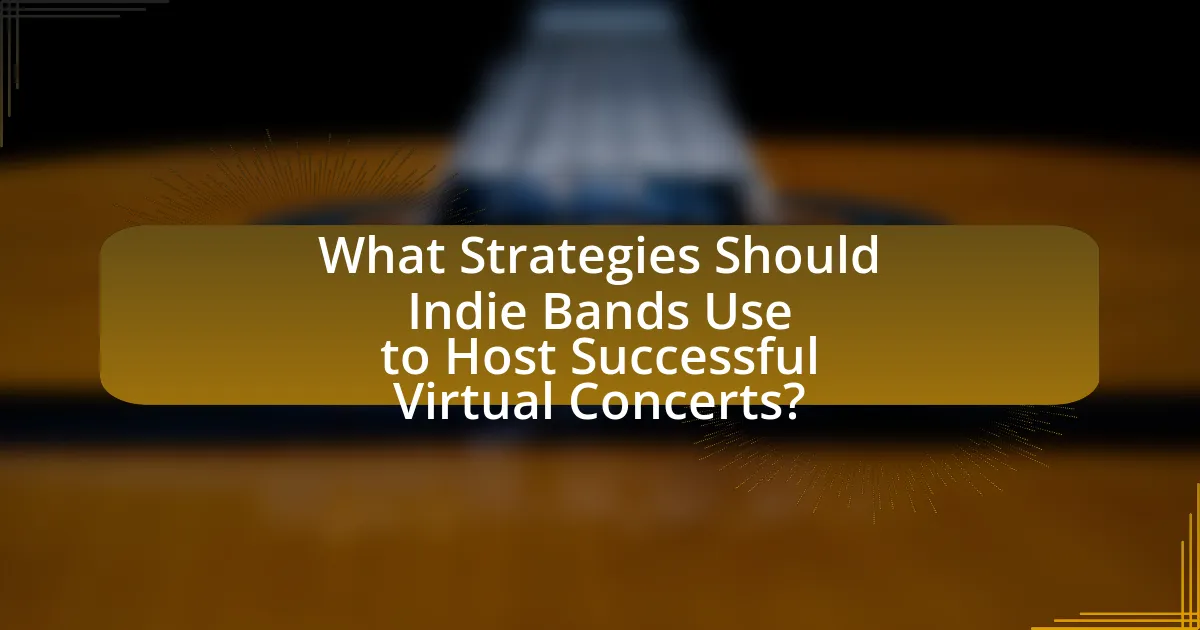
What Strategies Should Indie Bands Use to Host Successful Virtual Concerts?
Indie bands should utilize a combination of high-quality audio and video production, effective promotion, and audience engagement strategies to host successful virtual concerts. High-quality production enhances the viewing experience, as studies show that 70% of viewers are more likely to stay engaged with clear audio and visuals. Effective promotion through social media platforms and email newsletters can increase attendance; for instance, 80% of concert-goers discover events through social media. Additionally, engaging the audience through live chats, Q&A sessions, and interactive polls during the concert fosters a sense of community, which is crucial for retaining viewers and encouraging future participation.
How can indie bands effectively promote their virtual concerts?
Indie bands can effectively promote their virtual concerts by leveraging social media platforms, engaging with their fanbase, and utilizing email marketing. Social media allows bands to reach a wider audience; for instance, platforms like Instagram and Facebook can be used to share event details, behind-the-scenes content, and countdowns to the concert. Engaging with fans through live Q&A sessions or interactive posts can increase interest and anticipation. Additionally, email marketing enables direct communication with fans, providing them with exclusive content and reminders about the concert. According to a study by Eventbrite, 62% of event organizers find social media to be the most effective promotional tool, highlighting its importance in reaching potential attendees.
What social media strategies are most effective for promotion?
The most effective social media strategies for promotion include targeted advertising, engaging content creation, and influencer partnerships. Targeted advertising allows bands to reach specific demographics, increasing the likelihood of attracting relevant audiences; for instance, Facebook Ads can be tailored to users based on interests and behaviors. Engaging content creation, such as behind-the-scenes videos or live Q&A sessions, fosters community interaction and keeps followers invested in the band’s journey. Influencer partnerships leverage the established audiences of popular figures to amplify reach; a study by Influencer Marketing Hub found that businesses earn an average of $5.78 for every dollar spent on influencer marketing. These strategies collectively enhance visibility and engagement, crucial for promoting virtual concerts effectively.
How can email marketing enhance concert attendance?
Email marketing can enhance concert attendance by directly engaging potential attendees through targeted communication. By utilizing segmented email lists, bands can tailor messages to specific demographics, increasing the likelihood of ticket purchases. For instance, a study by the Direct Marketing Association found that email marketing has an average return on investment of $42 for every dollar spent, indicating its effectiveness in driving sales. Additionally, personalized emails that include exclusive offers, reminders, and updates about the concert can create a sense of urgency and excitement, further motivating fans to attend.
What are the best practices for engaging an online audience during a concert?
The best practices for engaging an online audience during a concert include interactive elements, high-quality audio and video, and real-time audience participation. Interactive elements, such as live polls and Q&A sessions, encourage audience involvement and create a sense of community. High-quality audio and video are crucial, as studies show that 85% of viewers prioritize sound quality in virtual events. Real-time audience participation, through chat features or social media integration, fosters engagement and allows performers to connect directly with fans. These strategies enhance the overall experience and increase viewer retention during online concerts.
How can bands interact with fans in real-time during a virtual concert?
Bands can interact with fans in real-time during a virtual concert by utilizing live chat features, social media integration, and interactive polling. Live chat allows fans to send messages and comments, creating a dialogue between the band and the audience, which enhances engagement. Social media platforms enable bands to respond to fan reactions and questions instantly, fostering a sense of community. Interactive polling can be used to let fans vote on setlists or song choices, making them feel involved in the concert experience. These methods have been effectively employed in various virtual concerts, demonstrating their ability to enhance fan interaction and satisfaction.
What role does visual presentation play in a virtual concert’s success?
Visual presentation is crucial for a virtual concert’s success as it significantly enhances audience engagement and emotional connection. High-quality visuals, including lighting, stage design, and graphics, create an immersive experience that captivates viewers, making them feel as if they are part of a live event. Research indicates that 65% of people are visual learners, suggesting that compelling visual elements can effectively communicate the artist’s message and enhance the overall performance. Additionally, platforms like YouTube and Twitch report that visually appealing streams attract more viewers and retain their attention longer, directly impacting the concert’s reach and potential revenue.
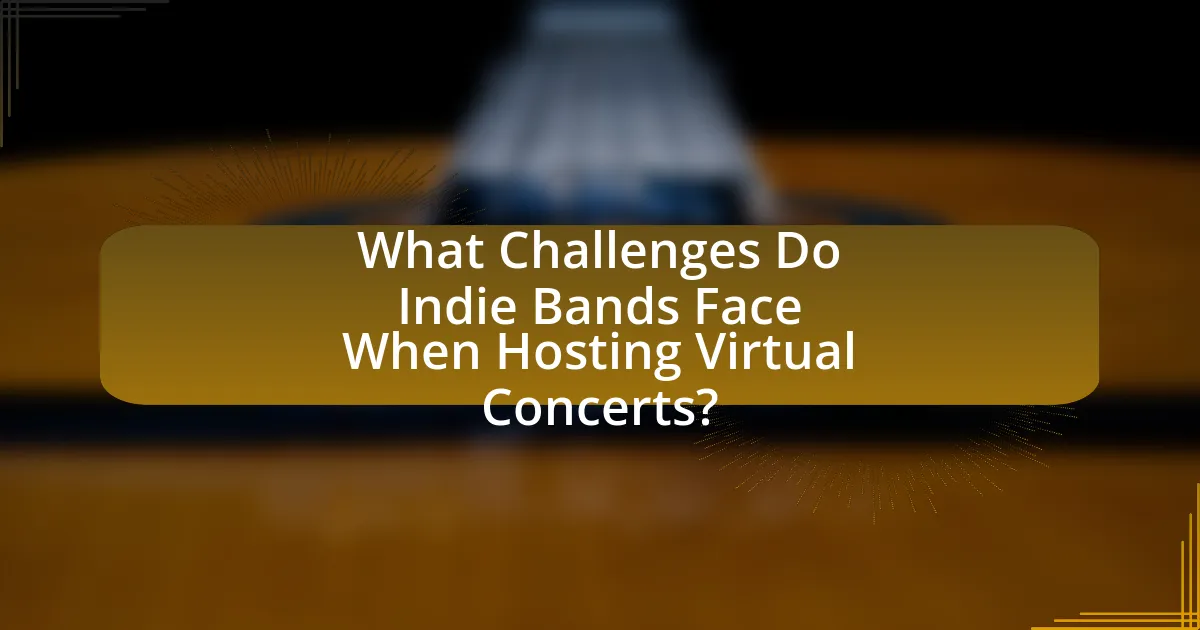
What Challenges Do Indie Bands Face When Hosting Virtual Concerts?
Indie bands face several challenges when hosting virtual concerts, primarily including technical issues, audience engagement, and monetization difficulties. Technical issues often arise from inadequate equipment or internet connectivity, which can disrupt the streaming quality and overall experience. For instance, a survey by Eventbrite indicated that 30% of virtual event organizers reported technical difficulties as a significant barrier.
Audience engagement poses another challenge, as indie bands must find innovative ways to connect with viewers who are not physically present. Traditional concert dynamics, such as crowd interaction, are difficult to replicate online, leading to a potential decrease in audience participation.
Monetization is also a critical issue, as many indie bands rely on ticket sales and merchandise at live events. Virtual concerts often struggle to generate comparable revenue, with a report from the Music Industry Research Association showing that 70% of musicians found it challenging to monetize their online performances effectively. These factors collectively hinder the success of virtual concerts for indie bands.
What technical issues might arise during a virtual concert?
Technical issues that might arise during a virtual concert include internet connectivity problems, audio and video synchronization delays, and software malfunctions. Internet connectivity issues can lead to buffering or disconnections, disrupting the streaming experience for both performers and viewers. Audio and video synchronization delays can result in a disjointed experience, making it difficult for audiences to engage with the performance. Software malfunctions, such as crashes or glitches in streaming platforms, can hinder the overall production quality. These challenges are documented in various case studies, highlighting the importance of robust technical setups and contingency plans for successful virtual events.
How can bands prepare for potential internet connectivity problems?
Bands can prepare for potential internet connectivity problems by implementing a multi-faceted strategy that includes using wired connections, having backup internet options, and testing their setup in advance. Wired connections, such as Ethernet, provide more stable and reliable internet than Wi-Fi, reducing the risk of disconnections during a performance. Additionally, bands should consider having a mobile hotspot or a secondary internet service provider as a backup to ensure connectivity if the primary service fails. Testing the entire setup, including internet speed and equipment functionality, prior to the event can identify potential issues and allow for adjustments. According to a study by the Pew Research Center, 90% of users experience some form of connectivity issues, highlighting the importance of these preparations for a seamless virtual concert experience.
What solutions exist for audio and video quality issues?
Solutions for audio and video quality issues in virtual concerts include using high-quality microphones and cameras, optimizing internet bandwidth, and employing professional streaming software. High-quality microphones capture clearer sound, while high-definition cameras enhance visual clarity, both essential for engaging audiences. Optimizing internet bandwidth ensures stable connections, reducing lag and buffering, which are critical for live performances. Professional streaming software, such as OBS Studio or vMix, allows for better control over audio and video settings, enabling adjustments that improve overall quality. These solutions collectively enhance the viewer experience, making virtual concerts more enjoyable and professional.
How can indie bands overcome audience fatigue with virtual events?
Indie bands can overcome audience fatigue with virtual events by diversifying their content and engaging audiences through interactive experiences. By incorporating unique elements such as behind-the-scenes footage, Q&A sessions, and themed performances, bands can maintain audience interest. Research indicates that interactive elements in virtual events can increase viewer engagement by up to 70%, as audiences feel more connected and involved. Additionally, collaborating with other artists or influencers can introduce new audiences and create a fresh experience, further combating fatigue.
What strategies can be implemented to keep content fresh and engaging?
To keep content fresh and engaging for virtual concerts, indie bands can implement strategies such as incorporating interactive elements, utilizing diverse formats, and regularly updating content. Interactive elements, like live Q&A sessions or polls during performances, enhance audience participation and create a sense of community. Utilizing diverse formats, such as behind-the-scenes footage, acoustic versions of songs, or collaborations with other artists, keeps the content varied and appealing. Regularly updating content, including new music releases or themed concerts, ensures that the audience remains interested and engaged over time. These strategies are supported by research indicating that audience interaction and content variety significantly boost viewer retention and satisfaction in digital environments.
What are the key takeaways for indie bands looking to host virtual concerts?
Indie bands looking to host virtual concerts should prioritize high-quality audio and video production to enhance viewer experience. Engaging with the audience through interactive elements, such as live chats or Q&A sessions, can foster a sense of community and connection. Additionally, promoting the event across multiple social media platforms is crucial for maximizing reach and attendance. According to a 2021 report by Eventbrite, 80% of event organizers found social media to be the most effective tool for promoting virtual events. Finally, offering exclusive content or merchandise can incentivize ticket sales and create additional revenue streams.
What essential tips should bands remember when planning their first virtual concert?
Bands should prioritize high-quality audio and video production when planning their first virtual concert. Ensuring clear sound and visuals enhances the audience’s experience, which is crucial for engagement. According to a study by Eventbrite, 70% of attendees value audio quality as a key factor in their enjoyment of virtual events. Additionally, bands should promote the concert effectively through social media and email marketing to reach a wider audience, as 54% of virtual concert attendees discover events through these channels. Finally, incorporating interactive elements, such as live Q&A sessions or chat features, can significantly increase audience participation and satisfaction, as evidenced by platforms like Twitch, where interactivity boosts viewer retention.
How can bands measure the success of their virtual concerts?
Bands can measure the success of their virtual concerts through metrics such as audience engagement, ticket sales, and post-event feedback. Audience engagement can be quantified by analyzing the number of viewers, chat interactions, and social media mentions during the concert. For instance, a study by Eventbrite found that 70% of attendees engage with the event’s social media content, indicating a strong connection. Ticket sales provide a direct financial metric, with successful virtual concerts often achieving sales that meet or exceed expectations. Additionally, collecting post-event feedback through surveys can offer insights into audience satisfaction and areas for improvement, with 85% of attendees reporting that they would attend another virtual concert based on their experience. These combined metrics provide a comprehensive view of a concert’s success.
